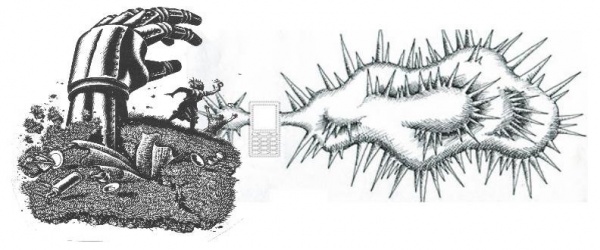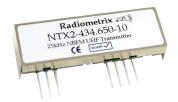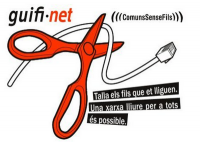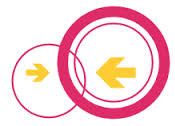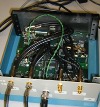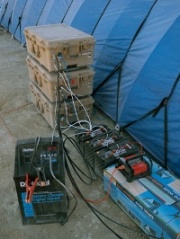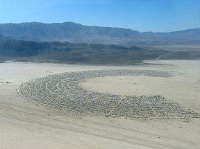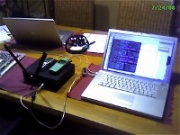Community run communication
If you choose not to rely on electronic communication, thats great. But for those of us who do, isn't it time we set up community run alternatives?
Problems with existing communication networks
Gradually, the internet, which once seemed like a relatively free and user-controlled system – at least compared with totally centralised TV/radio broadcasting, is becoming a controlled commercial space where people don't trust each other and we are constantly under the eyes of authorities and businesses - much like our city centres.
Centralisation of control, censorship, privacy
Two examples: In feburary 2012 the non-profit website 'scroogle' which offered an alternative version of google (where searches were not recorded) was taken down after action against it taken by google. Then in march 2012 google put into practice their new privacy policy, making users search history available to other google owned sites. Of course other sites exist which provide secure web searches.
During the uprising in Egypt 2011 there was an internet blackout, making it clear that such a communication network is valuable for organising social change but sadly rests in the hands of companies willing to cooperate with the authorities. Since then the US has began to develop an 'internet kill switch'. See the US Open congress bill 'Protecting Cyberspace as a National Asset' and indymedia article Internet Freedom Fighters Build a Shadow Web
- La Quadrature du net association to defend rights and freedom of internet users. Includes much information about net neutrality also see net neutrality wikipedia article
- accessnow.org campaigns around 'digital freedom'
- Telephone portable, gadget de destruction massive zine (fr) pdf sur infokiosques.net
- Ne laissez pas les machines jouer avec les enfants zine (fr) pdf sur infokiosques.net
- quema tu movil (Es) zine pdf (burn your phone)
- p2p foundation organisation promoting peer to peer practises, 'towards an open and autonomous internet and society'. The site also has an open hardware directory
- redecentralize.org a series video interviews about projects which contribute to the decentralisation of communication. See also their list of alternative internet projects
- federation FDN Fedaration of associative internet service providers in france
ideas for community run communication, new and old
In order for a community run network to become popular, it might be useful to have some universal standards, and a way for different networks to link together. A small group might use high frequencies to get high bandwidth communication locally, but how can we connect that communication with lower frequency, longer range links to other communities? If we are going to set up some sort of repeaters or base stations to link groups, they need to be useful to everyone, and not dependent on other parts of the network. Some repeaters might be installed in vehicles or boats that move around. Or they might be dependent or wind or sun for power – so they cannot be always relied upon.
It is relevant here to question what is important to us in a communication network. Simply spending time with and talking to people around you is a very useful way to communicate. Any kind of centralisation or broadcasting of information could be argued to be detrimental to the autonomy of individuals and communities. when we look at examples in 'nature' we can see that beautiful organised structures come about as the result of a large number of low level interactions.
food and fire
make food and fire, people come together and communicate.
Language
Language is an important communication tool. Like other aspects of our culture, it is becoming more homogenised and less diverse. There are many examples of when a common language has been used as a way for a minority to have power over many, and of when speakers of other languages or dialects are oppressed. Language homogeny is a structure used to create a national identity and recognition of and obedience to a national state. Many revolts and uprisings have been possible because of a refusal to use the majority language. In recent times, the globalisation of the market and of communications infrastructure (for example the internet) mean even more homogeny of language, allowing even more centralisation of control by a minorty. Of course, using a common language improves relations between communities, but when this is forced or imposed my a minority there will always be some kind of communication breakdown, a loss of some culture, ideas or knowledge, and somebody will be more isolated. Thats not to say we should not learn popular languages and use them to network with far away friends, but that we must recognise that divirsity of language is important in maintaining decentralised social control.
storytelling and folklore
Stories are a way to memorise ideas so they can be passed between groups and between generations.
Post
Community notice boards
A simple way to communicate in a group is to leave a written or pictorial message for others to see. A way of making it weatherproof is usually needed.
Printing
Some would argue that the invention of the printing press, meaning that information could be mass produced, was a hindrence to our diversity of ideas. There are no doubt problems brought about by any kind of mechanism which allows a minority to speak to the masses. But of course they can also be very important and empowering community tools.
- Toner refill - wikipedia article on refilling photocopier laser printer toner
- Printer and Photocopier Troubleshooting and Repair Collection
radio
The radio spectrum, like other kinds of space, has been divided into discrete parts of which the majority is resverved for companies who will sell it back to us to use. to use it in a genuinely decentralised way we might need to disrespect the rules of bandwidth ownership.
amateur radio
'amateur' radio communication has existed for over a hundred years. It is both a local and an international network and has often been relied upon when other communications have broken down because of disasters such as floods. Data modulation systems such as PSK31 can allow text services similar to email or sms, which can operate over thousands of miles on HF. Using the amateur bands requires a lisence and an official 'callsign', which are relatively cheap and easy to get, but there are some undesirable restrictions. For example, sending encrypted messages is forbidden, and the lisencing association stores personal details of its users and will cooperate with governments. Of course we could use similar systems illegally, but as an existing nework it has the advantage of having estabilished and well documented international standards, as well as infrastructure such as repeater stations. The amateur community emphasises learning and experimentation rather than a practical everyday communication tool.
- AMPRNet Amateur packet radio network, also known as hamnet, is the name given to computer networks connected by amateur radio links. TCP/IP (internet protocol) packet radio networks have existed since before the puplic internet but have never been very popular, partly because of bandwidth restrictions (VHF links are commonly limited to 9600 baud). Interestingly radio amateurs are allocated a chunk of the IPv4 address space (44.0.0.0/8).
- Hinternet on noisebridge
- High Speed Multimedia Radio this article looks at using 802.11 wifi on different amateur bands.
- Low cost E-mail over HF with OFDM and turbo coding. This project looks to be a robust long distance solution. It uses newqpsk (or Q15X25) protocol with the 'soundmodem' software. OFDM seems to be gaining popularity in these lower parts of the spectrum, but I have a bit of trouble understanding this example, how can a standard HF transciever be used with a new and different modulation mode?
- QRZ.com callsign database, also forums including buying and selling amateur hardware.
- chirp open source, cross platform, radio programming tool (software)
- The (chinese) radio documentation project produce a creative-commons-licensed manual for the Baofeng uv-5r, a low cost vhf/uhf handheld amateur radio (2m and 70cm).
- CQInet open source software VoIP internet links for amateur radio. Alternative to IRLP, ILink or echolink.
Using simple, low cost transcievers for data
A simple solution can be to use low cost UHF transmitters/recievers with RTTY. There are some very cheap transmitters sold on ebay, some sold for use with arduino or raspberry pi (see issue 8 of magpi magazine). The problem is that the cheaper ones do not support channel selection, so would interfere with each other.
- Radiometrix, based in the UK, make quite good quality but still fairly cheap stuff. Also some transcievers with chanels selection and more high end radio modems.
- Linking an Arduino to a Radiometrix NTX2 Transmitter this guide explains how to connect one of these simple transmitters.
- strato -antenna design
companies selling radio and electronics stuff
- wimo antennen and electonik (de) This site also has some useful help guides in many languages.
- stabo.de cb kit and antennas`(de)
- cbplus (fr)
- e44 (fr)
- selectronic (fr)
- yagi.pl antennas and other kit for wifi, wimax, gsm, umts
pirate radio broadcast
Pirate radio can be empowering for a community and is a useful tool for combining art and information. The advantage is that the recievers are cheap and can be found everywhere. Compared to wifi networks it is much more practical for recieving in more wild places, fields, gardens, workshop, meaning we can be doing practical things and not stuck indoors, while recieving it. Of course there are legal problems with broadcasting without a lisence, especially if it is done in the city. But using it in isolated rural areas is something that can definately be experimented with. As anyone with an FM radio can listen, it can be a good way to make links with other people who live nearby.
We must not forget that the nature of broadcast is that it remains a one-to-many 'shut up and listen' monologue, and care must be taken that it remains a project that everyone can participate in.
FM systems will usually use a 1 or 2w 'exciter' to produce the modulated signal and then an RF amplifier. Many modern systems, especially the cheaper/lower power ones have the exciter and amplifier all in one box or even all on one board. 'HLLY' and similar Chinese brands are like this and are very cheap and simple to use. However they are not very high quality and not suitable for high power transmissions (more than say 60w).
Most low power FM transmitters run on 12v DC so are perfect for running from batteries. If you want to run from the mains electricity and dont have a transformer, computer power supplies work quite well. If they are modern ATX ones, you will need to connect the green wire on the motherboard connector to a black wire to switch it on. Then on each block of 4 wires you have yellow and black wires to give 12vDC and red and black to give 5vDC.
studio to transmitter audio bridges
Many pirate radio stations use a 'bridge' to link the studio to a remote transmitter. This is done either for security reasons (not wanting to get caught at the site of the transmitter) or simply to keep the transmitter close to the antenna when the antenna is in a difficult to reach spot (remember, the hieght of the antenna greatly effects the range). A bridge which gives a lot of range allows you to be very creative with antenna locations, as the transmitter could be powered by a small solar panel and battery and put in a very difficult to reach place. This 'bridge can be made in various different ways:
- Using a very long audio cable
- Using a second, usually lower power, FM broadcast transmitter operating on a different frequency.
- Using transmitters from wireless microphones. Most have at least 200khz of bandwidth and work in 470-698mhz UHF TV spectrum (could also be interesting to use for data...)
- Using a "microwave audio bridge" which you can buy, often they work on 2.4 GHz wifi.
- use wifi routers and audio streaming software to make the bridge (a diy version of the above).
- use an internet link. A computer (eg: raspberry pi) and internet dongle or whatever (instructions in forum on Radionecks)
- use a PMR (walkie talkie) link. Probably would be bad audio quality because of low bandwidth but maybe one could find a way to have a high bandwidth bridge on PMR frequencies. (maybe some wireless microphones do this?)
- use CB, apparrently this has worked well for some projects. Again of course the bandwidth means a loss in quality but the advantage is the transmitter can be *very* far away. A possibility would be to use modified CB equipment to spread the signal over several channels.
- or use some other radio frequency, with SDR or amateur stuff we can experiment...
Pirate radio links and projects
- Radionecks mostly london based pirate radio forum. there is a lot of interesting stuff, and also a place to buy and sell kit.
- Making waves:pirate radio for actikids pdf zine
- Complete manual of pirate radio pdf book, quite old
- sysbroadcast make and sell high performance transmitters and amplifiers, based in france (site still under construction)
- ukw-senderbau.de sells transmitters and other kit (de)
- free radio berkeley 'radio action training' with video guides. They also sell transmitters and other kit.
- FMA200 tunable 5/8 wavelength antenna. Is quite a good commercially available antenna for FM.
- freie-radios.net - audio portal of community radios. Over 25,000 recordings
- radio4all.net - An archive of radio transmissions as audio files.
wavelength calculation
For making antennas its important to know the wavelength.
wavelength(lamda) = c / frequency c = speed of light = 299,792,458 m/s or just use c = 3 * 10 ^ 8 so if we use working with frequency in MHz we can use c = 300m/s so wavelength = 300 / frequency in MHz so 100mhz = 3m
Shortwave pirate radio
Many pirate radio stations operate on FM. But there are also AM stations covering larger areas, and there is an international shortwave pirate radio scene.
- free radio cafe lots of info and a discussion forum about SW pirate radio.
- SW Pirate radio logs and links
- Shortwave dx blog
- UK DXer addresses - list of addresses for SW pirate stations
- piraten.wdb - another list of stations
darknets
networks which exist 'outside' the internet are gaining popularity. Many of them are comprised partly or entirely by internet 'tunnels' meaning they are not independent of interenet, but aim to create free and secure alternatives within it.
- GNUnet GNUnet is a framework for secure peer-to-peer networking that does not use any centralised or otherwise trusted services. GNUnet wikipedia
- Tor free software for online anonymity. There are certain services and websites configured to be only accessible to Tor users, which comprises a kind of darknet, including email, the hidden wiki, The silk road marketplace (now allegedly shut down).
wifi mesh or point to point
Using wifi for outdoor links is gaining more and more popularity. As the 2.4ghz band becomes crowded in densly populated area, more projects are begining to use the 5Ghz and 10Ghz bands as well.
- wireless networking for the developing world ebook
- freenetworks.org an association of community network groups around the world.
- Battlemesh an annual european event to compare different routing protocols for mesh networks
- OpenWrt Open source firmware for routers and other embedded devices
- WRTnode First & only open source hardware for OpenWrt, the world's smallest Linux+Wi-Fi development board.
- free antennas.com
- Freedombox example projects
- 430mhz data transfer on this wiki
- Projectmeshnet.org "Project Meshnet was created out of the /r/darknetplan community in order to fight back against Internet censorship by corporations and governments around the world. It aims to use a combination of software and hardware to achieve the goal of a censorship-free Internet" This wiki is a guide to setting up a meshnet node, using CJDNS.
- Darknetplan subreddit "A place to organize efforts to create a hardware/software stack for a globally scalable system of interconnected local meshnets. We realize that the inclusion of "darknet" in this name does not properly describe our current objectives, but the meshnet is a necessary foundation for the final goal of a truly resilient darknet."
- cjdns software cjdns wikipedia
- hyperboria decentralised network powered by CJDNS
- maidsafe 'platform for decentralised internet' - distributed cloud storage.
- Storj software for distributed cloud storage.
- netsukuku a very interesting project. Has not been maintained for a while but is recently being re-started.
- FON - commercially provided cooperative wifi sharing (but you need an internet connection to join)
- tlant2409b photos of inside a commercial 2.4Ghz directional antenna (by TP-Link) to give ideas on DIY design.
mesh routing protocols
- olsr Optimised link state routing
- B.A.T.M.A.N Better Approach to Mobile Ad-hoc Networking
- bmx6
- Babel a loop-avoiding distance-vector routing protocol
guifi.net
guifi.net is based mainly around catalunya/valencia, and with over 20,000 operational nodes, it claims to be the biggest wireless network community in the world.
Each local guifi.net group organises between themselves financially - antennas can be bought be individual users, but often it is useful to put together some money for more expensive longer distance 'supernodes' and for times when nodes would need to be replaced, for example after being struck by lightening.
Many local guifi.net groups have successfully persuaded local government to share their internet connections, for example from libraries or offices, by allowing the group to install an antenna at the site linking it to the guifi network.
Guifi.net is backed by a 'foundation' officially registered as an operator with the Spanish Telecommunications Market Commision. Anyone (as long as they abide by guifi.net's code of practice) can use the name, and take advantage of being recogised as a foundation. For example, the inhabitants of two towns might organise together to lay fibre between the towns, and use guifi.net's foundation status to get permission from local governement.
They also have a good advocat and rely on european law to settle disputes about the legality of the project.
They use a private address space 10.xxx, ips are allocated by their website. and there are dns servers to resolve these local ips. The network is primarily used for providing interenet access, but off-internet services (ftp, etc) also exist and are quite popular.
Many guifi.net groups use mikrotik routers, and some use ubiquity.
freifunk
Freifunk is an international Project for free wireless networks and frequencies (Open Spectrum). Originating in germany, there are many community wireless mesh networks operating under the name 'freifunk'. The freifunk firmware is a modified version of OpenWRT designed for mesh networks. In Germany, there are legal problems with offering unlocked wifi internet access because of the oppressive regulations about filesharing and their implications for the interenet account holder (Störerhaftung). Many freifunk projects now use Virtual Private Networks to re-route network traffic to get are this problem. This highlights a problems with the regulation of the internet by governments, and another way to get around it could be to begin to use off-intenet projects and services.
- freifunk.net
- freifunk wiki in english
- OLSR an adhoc wireless mesh routing daemon
funkfeuer
funkfeuer.at is a free mesh network project based in austria, using OLSR routing protocol. It is a radio network, also using internet VPN tunnels to link 'radio islands' (nodes not accessible by radio).
tetaneutral
- tetaneutral.net Toulouse based wireless ISP, and member of Federation French Data Network, a federation of associative (non-commercial) ISPs in france. They use mostly ubiquity routers to make point-to-point links in and around toulouse.
more community wireless networks
- wikipedia list of wireless community networks by region Please help maintain this page, it is quickly outdated.
- ninux.org based in Rome
- wlan slovenija Open wireless network of Slovenia
- CZFree.net
- bristol wireless UK
- redbricks intranet collective manchester, UK
- own.spc.org greenwich, london, UK.
- consume.net london based. Not as active as it once was.
Wifi Hardware manufacturers
Some commercial manufacturers of wifi equipment are
- Mikrotik based in Latvia. Their routers run the companies own firmware, and cannot run OpenWRT which is a big disadvantage.
- OSBridge based in poland.
- Ubiquiti Networks big company based in United States.
- Soekris based in united states. Make extendible hardware, that you can add stuff to.
Many wifi projects use cheaper brands of routers, designed for use in the home, such as Linksys, TP-Link and Buffalo.
light modulation
Optical links can give very high bandwidth but must be exactly pointed at each other.
- RONJA Reasonable Optical Near Joint Access. Ronja is an open source hardware project, using modulated visible (or infrared) light, with 153 registered installations worldwide. It is developed in Czech republic where it is deployed by ISPs as well as serveral community wireless networks, for example CZFree.net.
- KORUZA– Open source hardware 1Gbps optial data link over up to 100m developed by wlan slovenija.
- modulatedlight.org
Whitespaces and Wireless Regional area networks
A standard for WRAN (wireless regional area networks), IEEE 802.22 has recently been developed, which will use 'white spaces' in the VHF and UHF bands, previously used by analogue TV broadcasting. The standard is likely to be used by commercial internet service providers to cover rural areas - internet base stations could operate over a 60km radius, like TV transmitters. It is the first international standard to use 'cognitive radio' to eliminate interference with existing TV signals. This makes it possible that transmission equipment will be software defined, making it more adaptable for eventually being re-used by us.
- IEEE 802.22 WRAN wikipedia article
- ieee802.org/22 official IEEE site
- ieee802.22 WRAN standard article on radio-electronics.com
- UK speeds up availability of 800MHz spectrum for lte auction This article shows how, in the UK, newly available spectrum is auctioned off to private companies. Perhaps rather than looking for legal solutions we should be thinking about squatting frequencies.
- love-hz a UK based organisation promoting public use of whitespace and 'Dynamic spectrum sharing', a new system made possible by changes in regulations by OFCOM, the UKs radio liscencing authority.
- Example of a commercially available 'whitespace radio' Carlson rural connect
software defined radio
Software Defined Radio devices, such as the Universal Software Radio Peripheral (USRP), produced in the US by « Ettus research », could be very useful in establishing a community run network. They are computer controlled radios, where various aspects of the radio's operation which traditionally were done by analogue hardware devices, in paticular the modulation and demodulation of the RF signal, are done digitally by software. This has only recently become posibile because with radio frequency high sampling rates are required and computers need to run fast enough to demodulate them. The advantage is that software defined radio devices are flexible, adaptable and easy to modify. For example by changing the software that the USRP is running, it could act as a FM transmitter, GPS reciever, digital TV decoder, VHF tranciever, whatever... Of course some hardware changes (such as antennas and the USRPs 'daughter board' circuits) are required, but essentially it is software which defines the USRPs operation. There are many commerically available software defined radio devices, but the USRPs is particularly interesting because its circuit design is published openly and the software it runs, GNUradio, is open source.
- wikipedia article on software-defined radio
- OpenHPSDR.org High performance SDR, a completly open source modular design, for the lower-frequency projects (will recieve 0-65Mhz).
- USRP - universal serial radio peripheral for use with GNUradio
- wired.com article on the USRP
- SDR# SDR software written in C#
- wirelessinnovation.org has stuff about software defined radios (but seems positive about military/commercial applications)
- tools4sdr.com wiki about software defined radio. has stuff about USRP and WRAN standard.
- The Scientist and Engineer’s Guide to Digital Signal Processing by Steven W. Smith. available online is a useful book for SDR.
- hackrf a SDR hardware project in development
- Using GNUradio to transmit data using ultrasound This project simply uses the internal soundcards on two laptops to transmit data from one to the other on a 23kHz audio carrier. The flexibility of software defined radio means parameters can be changed very quickly to get the optimum transmission for a particular situation.
Reducing resources and waste by less hardware redundancy
Making devices more flexible by increasing the extent to which they are controlled by software is good because when the device is no longer needed it can be used for something else instead of being thrown away. Multi-perpose programmable devices, such as the arduino or raspberry pi, are good examples of hardware which will never become redundant. Software defined radio is likely to gain popularity in the coming years, which is interesting for us because it is easy to modify for different perposes. So when this technology becomes widespread and easy to find for free, we could modify commercial devices to work with our own set of standards – and if we change those standards at some point we will not need to get new equipment.
SDR use for mobile phone base stations
The USRP has been used in projects to decode GSM mobile phone signals. It is also used in a project to create easy to build GSM base stations using OpenBTS. A free mobile network using the USRP running OpenBTS (with some RF amplifiers) and powered by wind has been set up at Burning man festival for several years (But with an official lisence). Of course if an unlisenced GSM network was to get popular, we would be likely to have problems with the authorities very quickly. But the advantage is that individual users need only a mobile phone – and thousands of them are being thrown away.
- OpenBTS
- Exploring GNU radio article
- The OpenBTS Chronicles OpenBTS at Burning man 08
- Rowetel blog about free telephony, developing world telephony, open hardware, renewables
- GSM Scanner Project - seems to have gone down - why?
- GSM researcher stopped at heathrow airport by UK government officials
- freeswitch software telephone platform
- airprobe (add link) SDR software for analysing GSM.
RTL-SDR recievers
More recently, low cost SDR receivers have become popular, as it was realised that SDR digital TV recievers (such as the NooElec TV28T)can be used in a very flexible way - recieving 25MHz to 1.7GHz, usually with a 1mhz bandwidth, meaning they can be also be used as a spectrum analyser to look at 1mhz at a time. An antenna design known as a discone is good for omnidirectional wideband applications making it good for SDR projects.
- RTLSDR wiki it has some ideas about alternative antennas and feeders to use
- RTLSDR community on reddit
- DIY discone antenna for rtlsdr this site also has some stuff for 2.4 ghz wifi projects
SDR for community run communication
There seems to be a number of reasons why Software defined radio could be useful for community run communication systems. It could allow us to create something genuinely independent of existing commerically provided systems, whilst being able to re-use redundant hardware from these systems. Changes can be made to the standards of how the system works without requiring any new hardware – saving resources. Frequencies can be dynamically allocated, allowing different types of hardware to work together and interference with other systems to be avoided automatically. Software projects are also easier to work on collaboratively than hardware, meaning they will be constantly optimised and adapted.
Modulation modes for digital radio
Orthogonal frequency-division multiplexing is the modulation system used by ADSL, Wifi, and DAB digital radio. Multiple carriers are used, and the idea is that sub carrier frequencies are chosen that are 'orthogonal' to each other, which means they do not interfere with each other. Interestingly it is used even on HF (below 30Mhz) as used by the new international broadcast system 'digital radio mondiale'. It allows for a better signal in less bandwith compared to standard AM modulation.
- Multiple frequency shift keying wikipedia article
- An Introduction to Multi-Frequency Shift Keying from qsl.net
sounds like chaos
Decentralised community run systems will, by their nature, encourage people locally to interact, as information spreads geographically. If you are searching for something or announcing that you have something to offer, it will be naturally easier to find responses nearby. Compared to the internet, it will be more chaotic, but in a beautiful self-organising way. Text/images/music/whatever will spread geographically and and be able to discover the same stuff as others nearby but it will change all the time as ideas/art spread between groups like a roumour, like fairytails.
But aren't you gonna spend forever setting all this stuff up while your plants need weeding and watering and you ignore the people around you.....
continue to 430mhz data transfer


